How do I make a Hypertufa Totem?
QUESTION
I want to make a bead totem, really badly. I'm also not sure if the mixture needs to be more pourable than packable. I was going to do the sand casting method. Could I use a quickcrete mixture recipe?
ANSWERS
Here are two "recipes" used by members
LIGHTWEIGHT CONCRETE MIX (FOR "BEADS")
1 part Portland cement
2 parts perlite
2 parts play sand
a handful of fibers (fiber mesh)
HYPERTUFA MIX (FOR "BEADS")
1 part Portland cement
1 part sand
2 parts peat moss
***********************************************************
Since the beads I made were cast in molds, I made the hypertufa mix wetter than usual, somewhere between pourable and packable.
Quikrete sand topping mix should work for making beads. Your beads will just be heavier than ones made of lightweight concrete or hypertufa. I say give it a try.
************************************************************
The Quikrete 'tufa recipe should work fine. And, as small as most beads are, even using Quikrete sand topping mix straight should give you beads that aren't too heavy to handle. I think you'll like the texture of 'tufa beads better though.
************************************************************
In sand casting make sure your sand is nice and wet so it doesn't pull out to much of the water in the tufa mix.
Mixing the cement
· 1 part portland cement
· 2 parts Perlite
· 2 parts play Sand
· Fiber mesh
· Color
Molding the Beads
· wet the sand ~ using spray bottle of water
· mold in sand using ball, bottle or anything you want
· press beads gently into side of sand mold
· use finger to poke for a dot or make a swirly in sand - anything you want to have protrude on the completed bead
· coupling in base, cap in finial and 1 rod for height
Let Bead sit for at least 20 hours
Un-Molding the Beads
· gently lift bead from mold
· remove excess sand
· rinse in bucket of water
· use rasp to file edges smooth and any other flaws
· sculpt anything you want at this time
· rinse and set aside to dry
Painting the Beads
· oxide/portland cement and water
· techniques vary
1. paint
2. paint and spray for mottled look
3. Dry Brush
4. Imagination
***********************************************************
MORE QUESTIONS
Are the tubes coated with anything special before putting them in the center and when did you pull them out? Someone said she "cut" the hole out after a couple hours, but her molds were solid and I don't know that cutting would work in sand.
How thick was your mixture? It looks as if some of them have been molded on the top with a form; Is that all freehand?
Do embellishments really stick or primarily just make an impression to be glued in place later? I'd probably want to stick shells, marbles, etc.
Do they need to be cured or just left to dry? I haven't done 'tufa yet and there is the whole spraying and wrapping aspect, or is that mainly for planters?
Do you think the fibermesh is necessary? I'm in CA, we don't have freeze/thaw issues.
***********************************************************
MORE ANSWERS
The tubes become wet and just tear or roll right out.
The mix is quite thick but it would be difficult to xompare it to something recognizable - a good stiff cookie dough
The amount of fiber is small in comparison to ALL of the other ingredients. If you are using a cup measure for the other ingredients the fiber mesh would only be a "pinch," up to a tablespoon
The forming above the sand is done by hand. Once you get your hands in the stuff you will see how easy it is to really form above sand
The embellishments - stone, marble, toys, whatever - are meant to stick with the actual totem. If they fall out, a little silicon will stick them back. None of the sand casting that I have done has resulted in any of the embellishments coming out. Once stuck, they are there.
The beads need to dry prior to removing them from their space, however the curing goes on and on and on....even after 28 days. It is best to remove the beads from their mold within the 24 hour period, as they are more workable, file-able, carveable, etc.
The beads can be stacked the day you remove them from the mold, however they are still fragile, so no lifting the entire totem by a bead, or dropping! They will break!
The fiber mesh is not necessary, however it does a couple of things: it "grabs" all the other ingredients and it also "grabs" onto the embellishments. If you are not planning to use fiber mesh, consider adding a bit of bonding/fortifier admix with the first addition of water to your mix, say 1 TBL to the first cup of water (But, I hesitate to change the recipe here).
************************************************************
I think you can definitely make a neat totem on your own (and especially with people here to give suggestions and provide help.). When I tried sand casting beads on my own, I felt that I could have benefited most from a class by seeing how wet the mix was, how wet the sand was, how shapes in the sand were made for casting, and how the tops of the beads were formed, but it was fun to play in the sand and experiment by myself, too.
Some things I did the first time that I wouldn't do again are:
made the cement/sand/perlite mix too wet.
made the shape in the sand (the "mold" for casting) too indistinct - you need to make a really good imprint in the sand of the shape you want your bead to be (example: box, bowl, glass, hand, etc.).
made the lines, dots, and other designs in the sides of the sand "molds" too shallow - you need to draw these on with tools (pencil, knitting needle, clay tools, dental tools, etc.) and then reinforce the designs with a tool or your index finger.
One of the things to remember about totem beads is that part of the charm is in the imperfections. Give it a try you'll love it!
***********************************************************
I used the sand casting method, imbedded some marbles, and used some bright colors, turned out really funky looking.
**********************************************************
QUESTION
What kind of paints did you use on yours?
ANSWER
I used good old Patio Paints.
**********************************************************
EVEN MORE TIPS & TRICKS
When I decided to try sand casting beads, a member sent me an e-mail giving me some pointers, tips, and suggestions based on her experience. Since it was so helpful to me, I would like to share that information here to be used by anyone interested in trying this.
The sand should be wet enough to hold shape, not so wet that there is a puddle on top. Similar to what would be used for sand castle building.
The depth of the sand is just what you think, as deep as the deepest bead with enough sand on the bottom so your mix doesn't come in contact with your sand container (or it might stick there). We worked in sand beds about 3" deep. They had set up another couple beds that had additional edging (lawn edging) on the side to make the space deeper.
Shaping of the sand is done with your hand and other tools, too. Initial shape is drawn with your finger on the smoothed damp sand, then start scooping out the shape. If you are wanting a straight sided bead, you could use a can and push it down to compact the sides.
Once you have your shape and the sides are sort of compacted, you begin to make your design. By poking your finger into the sand, it will create a knob when turned out. Sometimes you may want to use the end of a wooden spoon or a drumstick, etc.... To draw a swirl, or a line, first draw with a stick, pencil, your finger, the line you want. Then come back and with your finger or end of the pencil begin to compress the line into the sand. All the sand that falls down can be scooped out. In addition, you should have on hand a chip brush (cheap paint brush) and a couple other little paint brushes to kind of feather the sand down to the bottom so you can scoop it out. Plus, you can dampen the brush and pick up stray sand. You can spritz your sand if you think it is getting too dry.
Before you put your mix in, decide if you are going to use any beads, baubles, etc. Place the side you want to show into the sand and only SLIGHTLY push in - you want the bottom of the tile, or bead to be sticking out slightly so that cement will grab it.
Then you need to have a toilet paper, or paper towel cardboard tube to gently stand in the middle of the hollow space. The tube will be wet by the next day and easily separates from the bead.
Note: When you put in your design and tiles, do not go too close to the tube as it will not show because another bead will be on top.
When your mix is ready, it should not be very wet. Begin by holding a small handful in your gloved hands and gently toss it back and forth to get it to gel a bit. Now hold the glob in one hand while holding your other hand over the top of the cardboard tube. Gently slide the glob to the side of the tube and repeat. You then gently push the glob down so it spreads out to the sand sides. Keep adding globs until it is full.
Now for the top. Because your mix is not real wet, you will be able to form the top by adding a couple more globs, then bringing it up to the tube in whatever shape you want. I did mostly little finger swirls or lines here. Then you can press in any beads you want.
To do the finial or top piece, there are a couple of options. (It is ALL optional, I guess) We used a 1" steel threaded cap piece. Hollow out your shape and designs for the top. Place the cap, threaded side down, into the bottom of the space. Then, place your globs of cement into the shape and any top pieces. We used a 3" cast iron finial (there are several suppliers on the net). Once it begins to slightly set up, we wiggled the iron finial into the cement and brought a little up the side to secure it, then shaped the portion of cement that showed, or added tiles, beads etc.
To do the base, we patted damp wand into a plastic mixing bowl and drew our design and tiles, etc. into the exposed sand. The bottom of the bowl becames the top of the base. Then we placed the 1" steel coupling into the middle. The coupling was hollow and we filled it with sand so no concrete got in. Then, begin to fill the rest of the space with concrete. At the top, we smoothed the mix because this is really the bottom - no need to put a design on it. When this is turned out, the threaded portion will be on the top and the sand can be sprayed out with water.
I wrote all this out and am thinking it will seem overwhelming, but it really is a simple process!!!! I do know that if you don't have supplies on hand, one could easily get frustated.
I think you need to have:
1) water sprayer
2) 2 plastic mixing bowls - one to mix in and one to create your base in
3) a few inexpensive paint brushes
4) several different things to shape with
5) cardboard tubes (paper towel, toilet paper, gift wrap)
6) a bucket of water to rinse hands, tools and bowls
One of the totem workshop teachers suggested that we each make a couple "spacer beads", although none of us did. She was, of course, correct! The spacer bead is done like the other beads except not very deep, and the top (part showing while being made) is flat. Maybe make a couple about 1-2".
**********************************************************
QUESTION Are the spacer beads meant to keep everything in a nice upright position or do they serve another purpose?
ANSWER Actually the metal pipe keeps the totem straight. Spacer beads might help to level sections with more irregularly-shaped beads somewhat. But, the real purpose of spacer beads is to make some space between your fancier beads (ones with marbles, tiles, shells, beads, raised designs, etc.) so the decorations can be seen and don't get lost.
**********************************************************
QUESTION What kind of rod/pole do you use to put the beads on?
ANSWER I used plumbing pipe for the rod to put the beads on.
**********************************************************
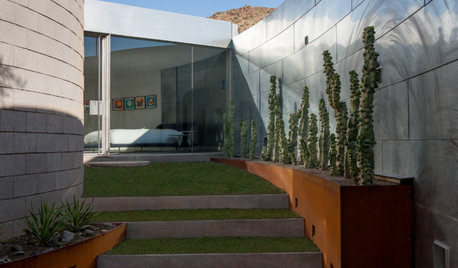
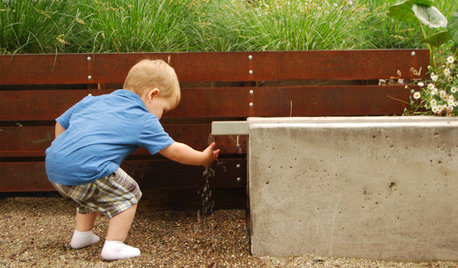
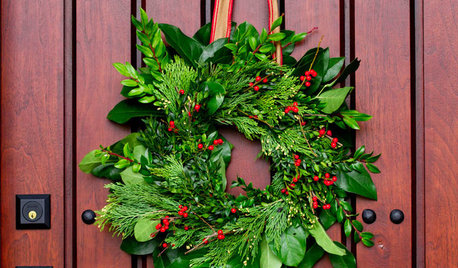
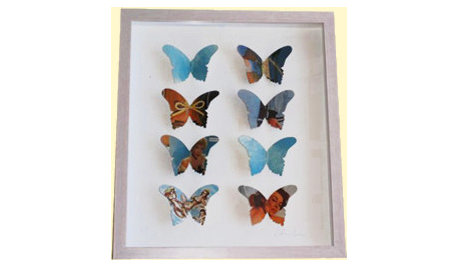
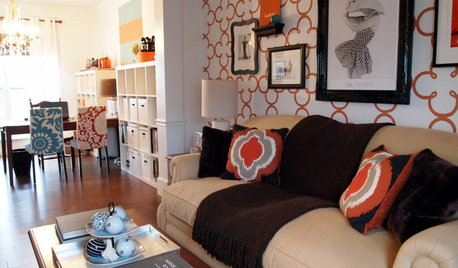
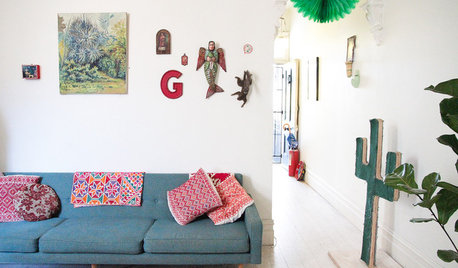







Related Discussions
Semi-Newbie Making a hypertufa pond, help asap, please!
Q
I Think I Made a few totems, What do you think?
Q
How do I make a concrete leaf casting?
Q
What kind of glue do I use to attach two pieces of Hypertufa together?
Q